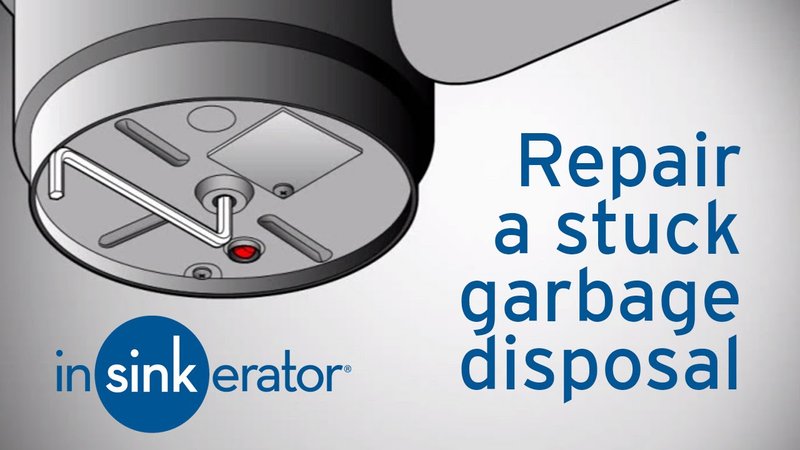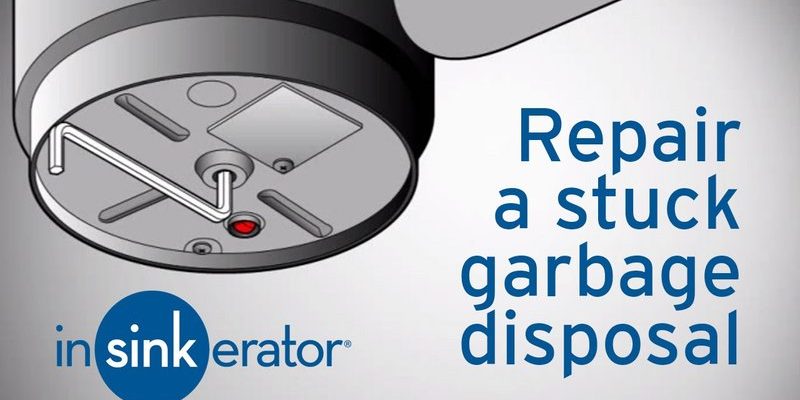
Think of Error Code F2 as your garbage disposal’s way of waving a little red flag. It’s signaling that something’s not quite right, and it needs your attention. You might compare it to a check engine light in your car—it’s a hint that your faithful appliance needs some TLC to keep humming along happily. Understanding what Error Code F2 means can not only save you from a malfunctioning disposal but also help you avoid potential water damage or unpleasant odors lurking in your kitchen.
Understanding Error Code F2
Here’s the deal: Error Code F2 usually indicates a jam or blockage somewhere in the motor or grinding chamber of your Insinkerator garbage disposal. Imagine it’s like a tiny roadblock preventing your disposal from functioning smoothly. This is not uncommon, especially if you’ve recently disposed of fibrous food scraps or foreign objects. When the motor can’t turn due to an obstruction, it sends out this error code to get your attention.
You might be wondering why this happens. Well, garbage disposals are robust, but they aren’t invincible. They grind up most kitchen waste, but certain materials can cause a jam. It’s similar to a car engine stalling when it runs out of gas—without the right conditions, it just won’t go. The disposal’s motor may try to spin, but if something’s stuck, it can’t rotate properly, triggering that pesky F2 error.
What are the consequences? If left unchecked, the motor might overheat, leading to potential damage. If the problem persists, it could even shorten the lifespan of your appliance. Thankfully, there are ways to address it before you reach that point. Let’s dive into some practical solutions and preventative measures to keep your disposal in prime condition.
How to Fix Error Code F2
So, you’ve got Error Code F2 flashing at you—what’s next? First, make sure safety is your top priority. Always start by switching off the disposal and unplugging it from the power source. You wouldn’t want any unexpected surprises while you’re tinkering around. Think of it like ensuring your lawnmower is off before you start clearing out the blades.
Next up, you might want to use a flashlight to peer inside the disposal’s mouth. Sometimes, a quick inspection can reveal the culprit—a stray spoon, a bit of bone, or a clump of fibrous vegetables. Using a pair of pliers or tongs, gently remove any visible debris. It’s a bit like fishing out a lost sock from under the washing machine—once it’s gone, everything works better.
After removing any visible blockages, try resetting the disposal. You can usually do this by pressing the red reset button located on the bottom or side of the disposal unit. This acts like hitting “refresh” on your computer, giving the disposal another chance to start up with a clean slate. Plug it back in and test to see if the error persists. Often, this simple reset can fix the issue, but if it’s still stubbornly showing F2, you might need to dig a little deeper.
Preventing Future Blockages
Prevention is often the best cure, especially when it comes to appliances like garbage disposals. To keep Error Code F2 at bay, it’s crucial to be mindful of what you’re feeding into the disposal. Think of it like your diet—feeding it junk will inevitably cause problems. Avoid disposing of fibrous foods like celery or corn husks, as they’re notorious for causing clogs.
Additionally, always run plenty of cold water before, during, and after using the disposal. This simple act helps flush small particles down the drain, avoiding buildup. It’s similar to drinking water after eating to help digestion—it keeps everything moving smoothly. You might also want to regularly clean the disposal using a mixture of ice cubes and vinegar, which helps dislodge any lingering debris and keeps the blades sharp.
If you find that Error Code F2 is a frequent visitor, it might be worth reconsidering how you use your disposal. Sometimes, slowing down and inserting smaller amounts of waste can prevent jams. It’s all about pacing and moderation, much like taking smaller bites to avoid choking. By keeping these preventative measures in mind, you can ensure your Insinkerator runs efficiently for years to come.
When to Call a Professional
If you’ve tried these steps and Error Code F2 is still rearing its ugly head, it might be time to consider calling in a professional. Sometimes, underlying issues with wiring or the internal components could be at play, and these require an expert’s touch. Think of it like calling a mechanic when your car’s making a noise you can’t identify—sometimes, you need that trained ear (or eye).
A professional can also perform a thorough inspection to rule out any major issues that could lead to more significant problems down the line. They have the tools and experience to quickly identify and resolve problems that might elude the average homeowner. It’s like having an experienced guide when you’re lost in the woods—they know the terrain better than anyone.
While it might be tempting to tackle the issue on your own, sometimes it’s worth investing in professional help to avoid costly future repairs. Remember, maintaining your garbage disposal in good working order not only saves you time and money but also keeps your kitchen a pleasant and efficient space.
In conclusion, while encountering Error Code F2 can be frustrating, understanding its meaning and knowing how to respond can save you a lot of hassle. By diagnosing and fixing the issue—or calling in help when necessary—you can ensure your Insinkerator continues to be a convenient and reliable part of your kitchen for years to come. Happy disposing!
